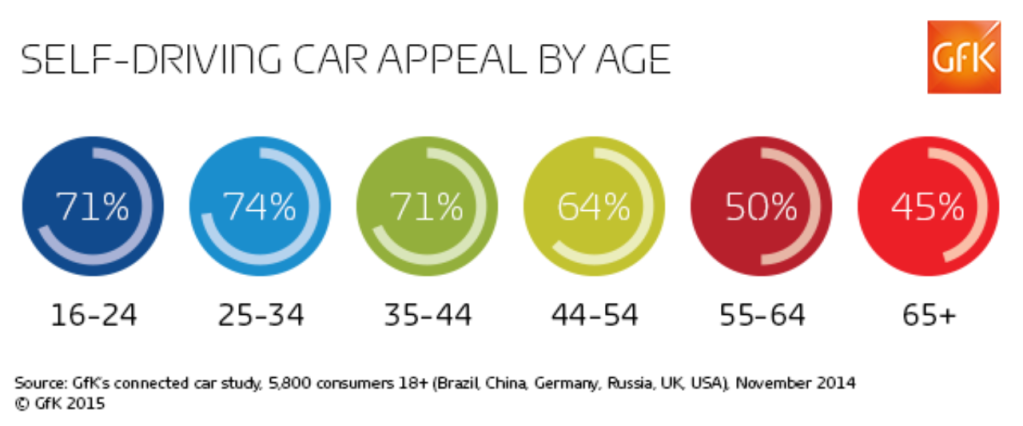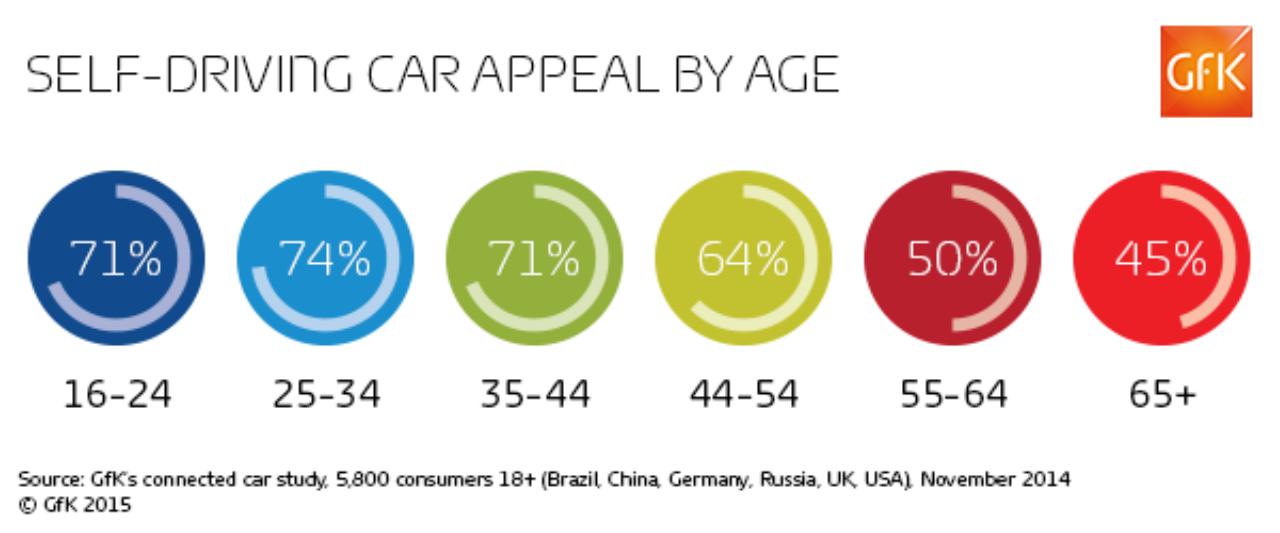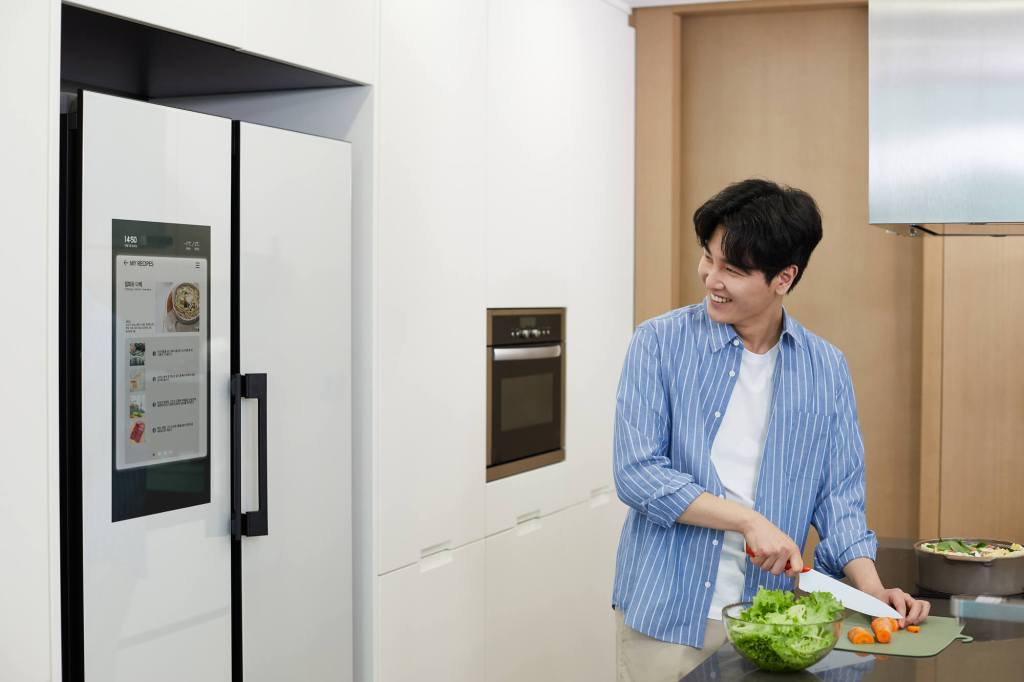Not so long ago it was a concept associated with science fiction. Now the dream of the self-driving car is on its way to becoming reality.
Obviously there are legal and regulatory hurdles still to overcome, but self-drive technology has been developed and refined, and self-driving cars will be on our roads much sooner than we imagined. So how are consumers reacting to the idea?
Rating appeal
In a recent global survey, 5,800 consumers in six markets were asked to evaluate driving concepts including that of the self-driving car. Overall, it appealed to 66% of those surveyed. The most frequent positive associations with self-drive given by those surveyed were “relaxed” and “free”. The most frequent negative associations given were “anxious” and “trapped”.
In response to the concept, there was a markedly stronger association in developing countries with feeling “free” and “excited”. Also notable was a stronger association in mature markets with feeling “powerless” and “anxious”. Feeling in control during the self-driving experience is more important to drivers in the developed world.
Among the respondents the younger age groups were more positive than the older age groups about the self-drive concept. Of the 25-34 age group 74% considered it appealing compared to 50% of the 55-65 age group. In fact, the older age groups surveyed were more negative about self-drive. 47% of 55-65 year olds reported that they perceived the idea of self-drive as either “not at all” or “not very” appealing. Older age groups are more likely to associate a self-drive car with feeling powerless, anxious and trapped – for example 30% of 55-64 year olds say they would feel powerless compared to just 16% of 25-34 year olds.
Safety first
In the survey, respondents saw safety as the greatest advantage of the “connected car”. Car manufacturers and technology companies alike need to further examine this angle, answering older drivers’ control concerns and persuading them of the safety benefits.
The tech-savvy pave the way
Leading Edge Consumers (LECs) are a key group, because they often lead the way in adopting new technology. They are identified as consumers who meet at least two of the following three criteria: early adopter, influential and passionate about shopping. 80% of LECs surveyed said that they found self-drive extra appealing, very appealing or fairly appealing compared to 64% of non LECs. The survey showed that LECs were more positive about new transport solutions such as ride sharing and pay-as-you-go use of cars, which may enable them to try new technology before they buy.
Communication: the key to success
The survey revealed some major misperceptions about self-drive. Over a third of respondents surveyed were unimpressed with the idea that they would have to abstain from drinking whilst in a self-driving car. Young people were particularly disappointed, stating that this made self-drive lose some of its appeal. Communication is therefore required to educate consumers about the true benefits of the self-driving car when it eventually becomes a reality.
The perceived and widely recognized benefits of self-drive are safety, reduced costs, easier parking and increased free time. Ultimately, the self-drive car could compete with train travel in terms of allowing business travelers to make productive use of their time, with greater privacy and convenience than train travel allows.
Self-drive cars are, undoubtedly, going to be part of our future. However before they can appear on our roads it is not just the infrastructure that must be developed and managed – it is the general public’s perceptions and expectations.
Survey methodology: 5,800 consumers were interviewed Brazil, China, Germany, Russia, UK and the US. Fieldwork was conducted up to November 2014. For more information please contact Gavin Sugden.






